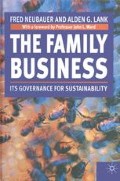Abstract
On Friday, February 24, 1995 at 7:15 in the morning, Peter Baring, the Chairman of the oldest Merchant Bank in the United Kingdom, received a call from Singapore that he had been dreading: a ‘big hole’ in the accounts was confirmed. Just how big was not yet known, but it was clearly greater than the bank’s capital. A ‘rogue’ trader had run up massive losses1 on unauthorised derivatives dealings in the Far East, which threatened to bring down the bank. Following time-honoured tradition, Baring sought an interview with the Governor of the Bank of England. Because the Governor, Eddy George, was away on a skiing holiday, Baring was seen by Rupert Pennant-Rea, the Deputy Governor. Senior representatives of 15 or so UK Clearing and Merchant banks were called to the Bank of England. There was frenzied activity throughout the weekend. On receiving the news, George immediately returned from Geneva, and the assembled bankers and their professional advisors were asked to put together a rescue package, although the extent of Baring’s obligations was not known. Neither the Bank of England nor the Treasury would provide a ‘cap’, or limit, to the potential liability, and the Chancellor of the Exchequer, Kenneth Clark, would not sanction the application of public funds. The bankers were not prepared to take an unquantified risk with their shareholders’ funds ….
I claim not to have controlled events, but confess plainly that events have controlled me
(Abraham Lincoln, US president, 1809–65)
Access this chapter
Tax calculation will be finalised at checkout
Purchases are for personal use only
Preview
Unable to display preview. Download preview PDF.
Notes
S. Hamilton, ‘The Collapse of Barings Bank’, IMD Case Study, 1995, p. 1. With the permission of the author, this section draws heavily on the work he has done in this area.
The Futures and Options Association, Managing Derivatives Risks — Guidelines for end-users of derivatives, December 1995, p. 7.
H. Parker, Letters to a new Chairman, London: Director Publications, 1990.
R. Simons, Levers of Control, Boston: Harvard Business School Press, 1995.
B. Garrat, The Fish Rots From the Top, London: Harper Collins Business, 1996, pp. 108–10.
A. Demb and F. F. Neubauer, The Corporate Board, New York: Oxford University Press, 1992, pp. 131–58.
J. L. Ward and J. L. Handy, ‘A Surrey of Board Practices’, in C. E. Arnoff, J. H. Astrachan and J. L. Ward (eds), Family Sourcebook II, Marietta, Georgia: Business Owner Resources, 1996, p. 265.
Copyright information
© 1998 Fred Neubauer and Alden G. Lank
About this chapter
Cite this chapter
Neubauer, F., Lank, A.G. (1998). Control as a Key Governance Measure. In: The Family Business. Palgrave Macmillan, London. https://doi.org/10.1007/978-1-349-14465-5_9
Download citation
DOI: https://doi.org/10.1007/978-1-349-14465-5_9
Publisher Name: Palgrave Macmillan, London
Print ISBN: 978-1-349-14467-9
Online ISBN: 978-1-349-14465-5
eBook Packages: Palgrave Business & Management CollectionBusiness and Management (R0)

